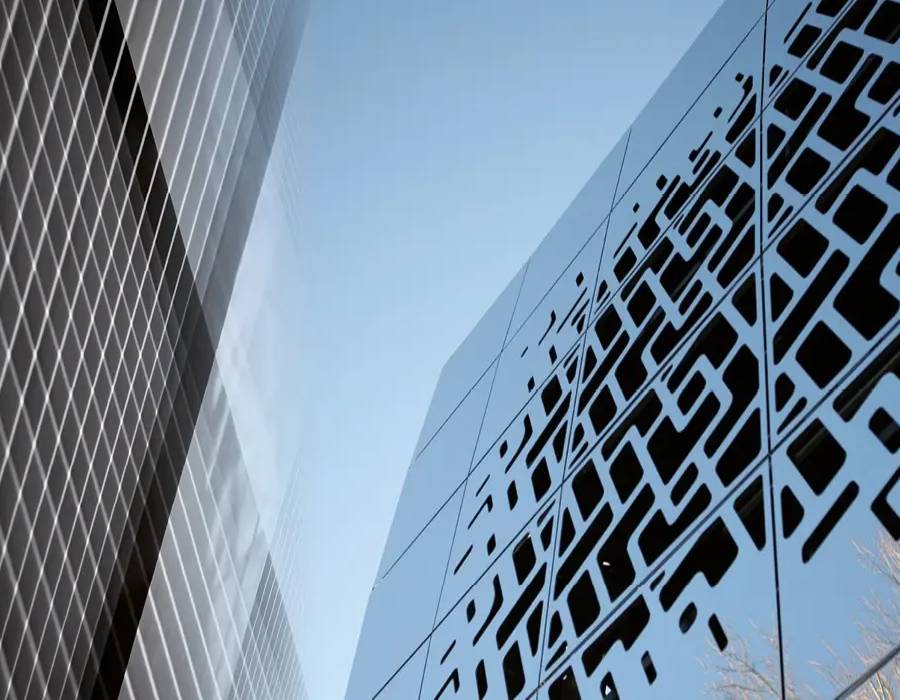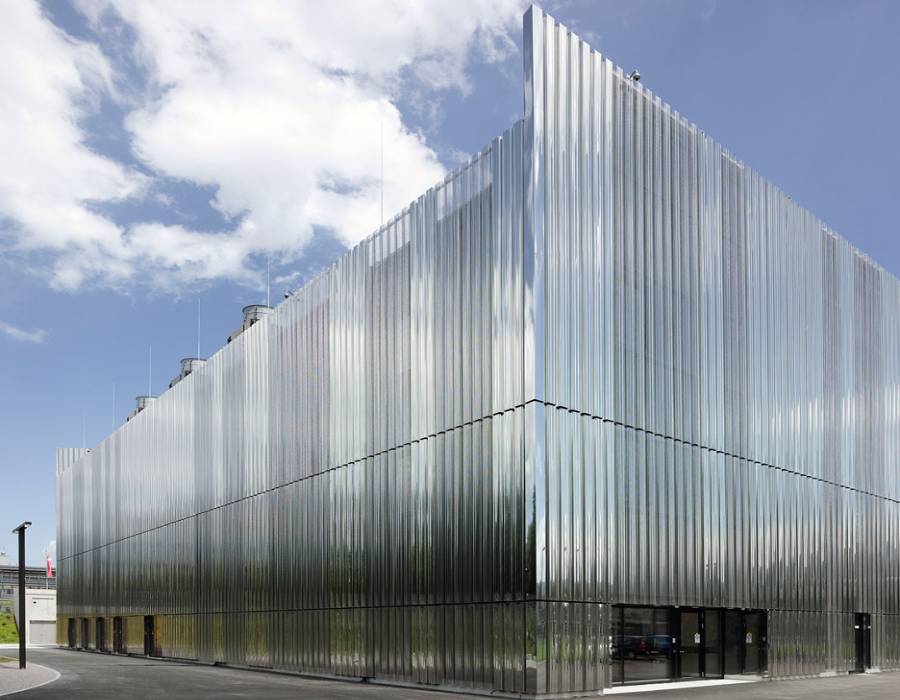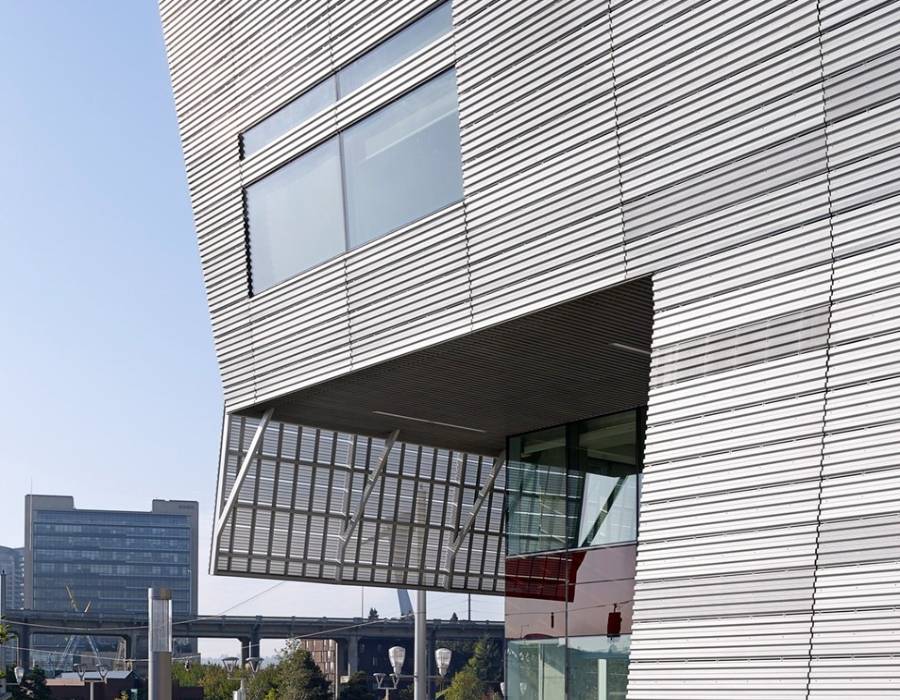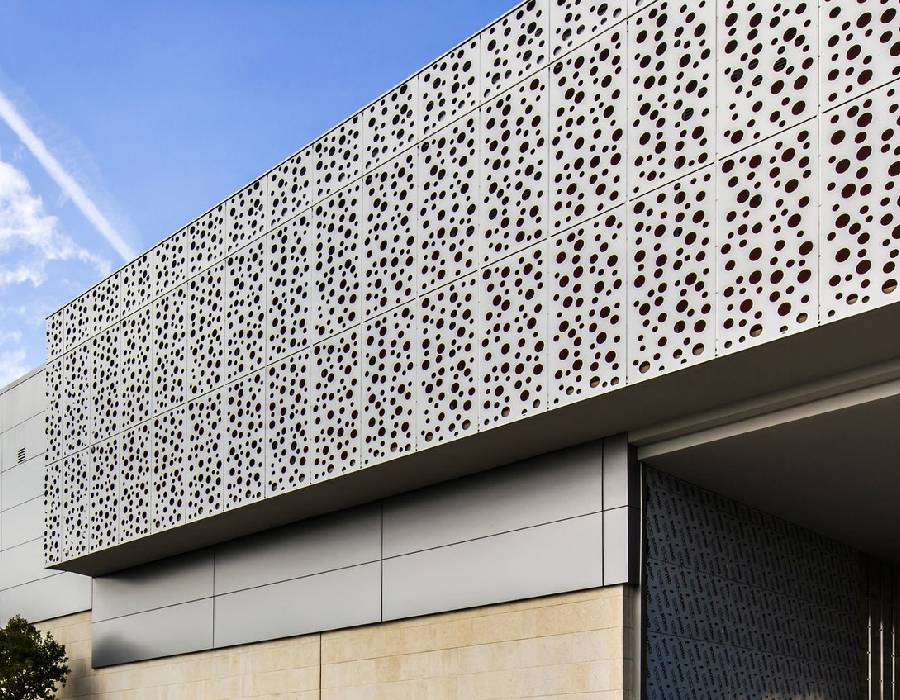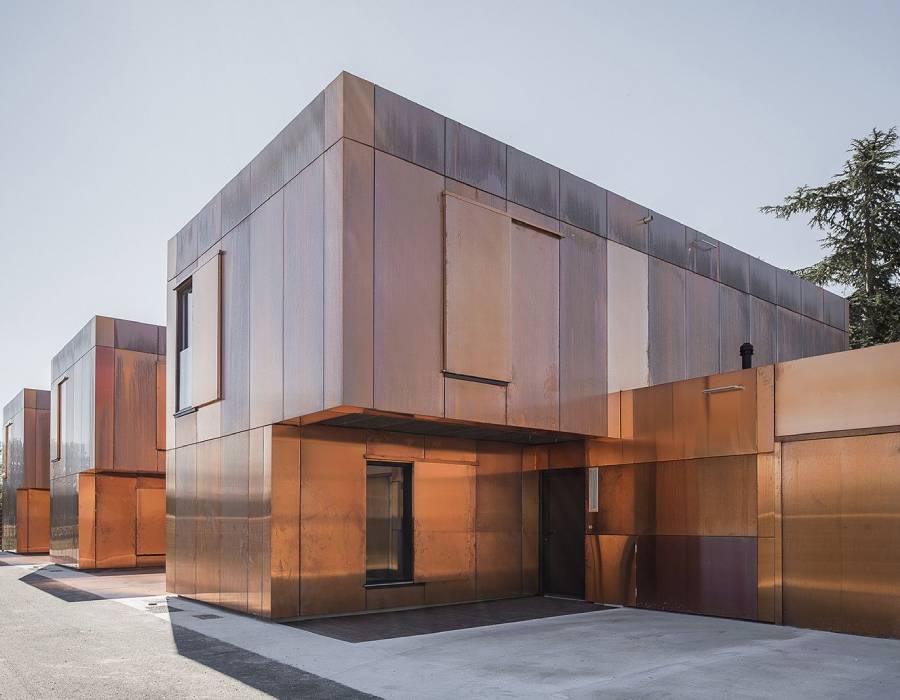Architectural Metal Facades
A facade refers to one side, usually the front, of a building. It is an integral piece to the overall design of a building. It provides the opportunity to create a personality and character to a building. Metal Facades can come in many shapes and sizes, and it is really a chance for the architect to showcase their talent by bringing a building to life.
Although a facade is often associated with older buildings and prestigious buildings, any building can create a recognisable facade. Many listed buildings and buildings in conservation areas may have restrictions on altering their facades. This demonstrates their importance to not just the building, but to the local communities and environments.
A curtain wall is a type of facade that has no structural impact. It is a separate structure attached to the building. This is particularly common in modern architecture where the architect simply utilises a design but doesn’t bring it into the structural support of a building.
Metal Facades are the face of a building and this part of the building envelope serves several purposes.
Types of Metal Facades
| Lightweight facade | Heavyweight facade | Prefabricated |
| Traditional | ETI Systems | Rainscreen cladding |
Adds Personality & Character:
A building facade is an opportunity to put the emphasis on design. There is ‘n’ number of buildings that settle for standard designs and perfectly meet the structural regulations but always lack their identity, character, and personality. A Metal Facade can play a huge role in this as it imparts that uniqueness to the structure which negates the detrimental effect of the building which lacks that something special.
Plays A Pivotal Role In Energy Efficiency
In addition to being aesthetically pleasing, a facade plays a pivotal role in energy efficiency and linking the exterior to the interiors of the building. Metal facade can help in significantly reducing the energy bills. You may think how, well, a facade minimizes solar gain, which in turn, reduces the cooling loads of the building which at the end results in minimal energy bills.
Shield Against Natural Elements
A facade protects the occupants from wind and rain and the extremes of temperature and humidity. Metal facade are incredibly popular for its resistance to temperature, weathering, and corrosion, which over many decades is a valuable characteristic.
Ensures Natural Ventilation
A facade essentially is the external skin of the building. And the protection provided by the external skin, confirms natural ventilation. This is achieved through various means, like design aspects, cavity skins, and mechanized windows. Also, a facade ensures the occupant’s comfort isn’t compromised during harsh climatic conditions like wind, rain, and snow.
Provides Acoustic Insulation
A well-designed facade external skin provides a high degree of acoustical comfort to its occupants as compared to a conventional building facade. Acoustic comfort in no ways compromises the required ventilation, air exchange and visual connection with the exterior.
Offers Comfort And Adds Productivity
A successfully designed building facade system empowers the occupants to regulate light penetration by several methods, like louvers or shading devices. In addition to this, it also allows the regulation of air movement and temperature with operable windows, which increases the overall buildings comfort levels. When comfort levels peak, better work productivity is pretty evident.
Provides Extra Security
A good Metal facade system provides a comparatively unobtrusive method of attaining building security by right planning and treating the building openings as opposed to the conventional system of grills and bars.
Adds Life To The Structure
Metal Facades are the outcome of sophisticated technology and advanced manufacturing processes which means they are highly resistant to the exterior environment. When compared to the commonly used exterior paints these can look smudgy, attract dirt and dust, facades, are sturdy and weather resistant, these powers make them highly durable hence they last for decades. In addition to that with new innovations in materials, ideas, and design, a building facade is continuing to unlock several opportunities for buildings.
Choosing The Right Building facade
Getting Metal facade construction right is extremely important as they can considerably affect the structures lighting, heating, and ventilation. While there are many factors which require consideration in building facade, one of the most daunting one is – Choosing The Right Material. Also, your decision on the right facade material needs to be made after considering a range of factors like:
| Water-Resistance | Energy Efficiency | Aesthetics & Texture |
| Versatility | Eco-Friendly | Durability and cost |
